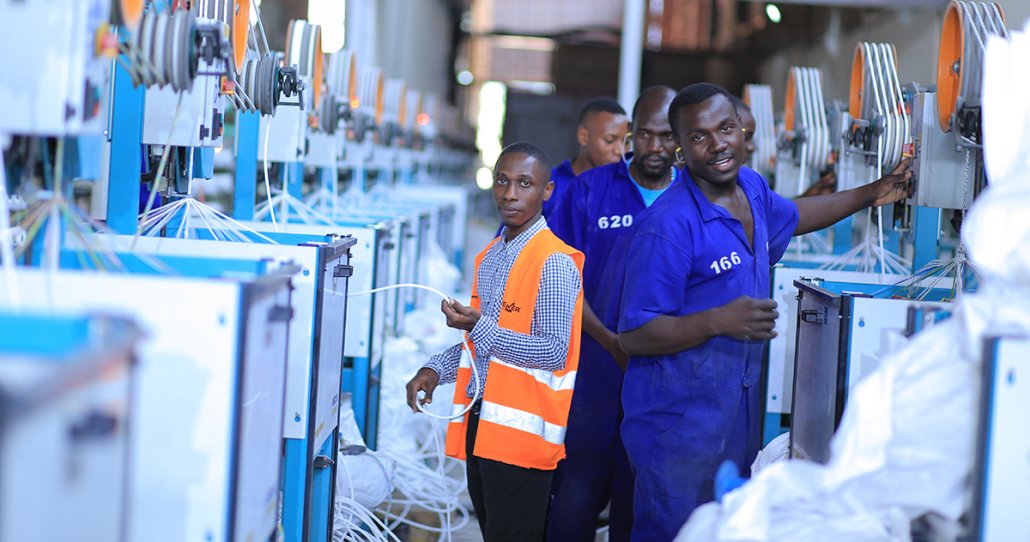KAMPALA, February 6, 2024 – Uganda’s real gross domestic product [GDP] growth rate rose from 4.6 percent in the financial year 2022 to 5.2 percent in FY20231, but domestic challenges persist, and external conditions remain challenging, according to the Uganda Economic Update published by the World Bank in December 2023.
“The services sector accounted for half of GDP growth, led by professional services, administrative services, and accommodation and food services. Agricultural output also rose by 4.8 percent during the period, driven by livestock and fishing, while irregular rainfall continued to adversely affect crop production. Growth in the industrial sector slowed to 3.5 percent due to declining mining and quarrying activity. High-frequency indicators suggest economic activity will remain solid through the end of the calendar year,” says the document.
It says tighter monetary policies have helped ease inflationary pressure. Influenced both by global and domestic factors2, headline inflation rose from 3.7 percent in FY2022 to 8.8 percent in FY2023, well above the central bank’s target rate of 5 percent.
Further, it says, rising prices for nonfood goods contributed 46 percent to the total increase in inflation in FY2023, as the shock of the external crises compounded the effects of adverse weather conditions, while food, energy, fuel, and utility prices also increased substantially during the year. “The inflation rate began to decline in February 2023 and reached 2.6 percent in November. Inflation is expected to continue easing due to softening international commodity prices, especially for energy, as external shocks abate, and supply-chain disruptions unwind. The relative stability of the Ugandan shilling also contributed to disinflation.”
However, the World Bank document says strong and sustained inflows of foreign direct investment (FDI) into the country helped finance a large current-account deficit of 7.9 percent of GDP. The current-account deficit, including grants, remained broadly unchanged from FY2022, as a surge in imports offset the recovery of goods exports and tourism inflows.
“Driven by the resumption of gold exports and a marginal recovery in travel inflows, exports increased by 2.7 percentage points of GDP. Although spending on imports fell by 8.3 percent, the shilling’s real depreciation during the second half of the year caused import costs to rise by 2.4 percentage points of GDP, offsetting the sizable growth of exports. The current-account deficit was financed mainly through FDI in the oil and gas sector and to a lesser extent by public-sector borrowing.”
On the other hand, the document, says monetary tightening slowed the growth of credit to the private sector. After expanding by 8.9 percent in FY2022, private-sector credit growth declined to 3.0 percent in FY2023. Slowing credit growth primarily reflected the rising cost of credit, as the central bank raised rates to manage inflationary pressures. “While lending to the public sector risks crowding out private-sector credit and slowing economic growth, personal loans and commercial lending to the transport, trade, and mining and quarrying sectors continued to increase in FY2023.”
The central government’s fiscal deficit reached 5.6 percent of GDP in FY2023, down from 7.4 percent in the previous fiscal year. Total central-government revenue rose to 14.2 percent of GDP, albeit well short of the policy target of 16-18 percent.
Improved tax administration, the Update says, pushed tax revenue from 13.4 percent of GDP to 13.7 percent, with increased collections of pay-as-you-earn tax, taxes on rental income, and casino taxes offsetting a decline in revenue from corporate income tax and withholding tax.
“Meanwhile, total spending fell from 21.5 percent of GDP to 19.9 percent. Development spending, much of which remains focused on megaprojects, fell from 7.9 percent of GDP to 5.8 percent. While part of this decline was planned as part of the fiscal consolidation agenda, development spending was also undercut by execution challenges both in domestically and externally financed projects.”
https://thecooperator.news/investments-of-1-4-percent-of-gdp-could-cut-emissions-by-70-percent/
Buy your copy of thecooperator magazine from one of our country-wide vending points or an e-copy on emag.thecooperator.news
